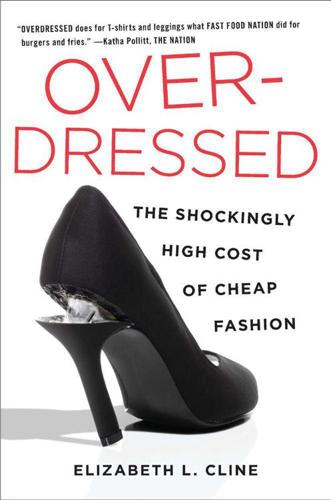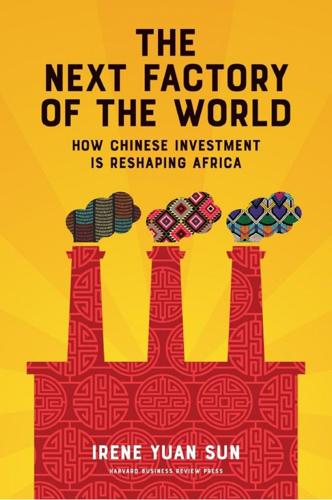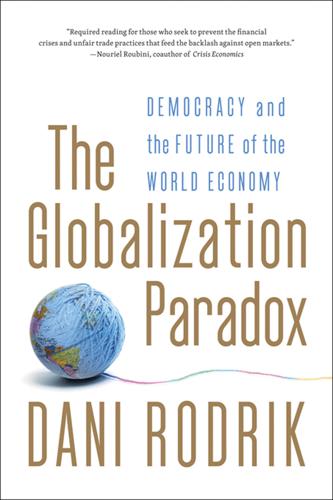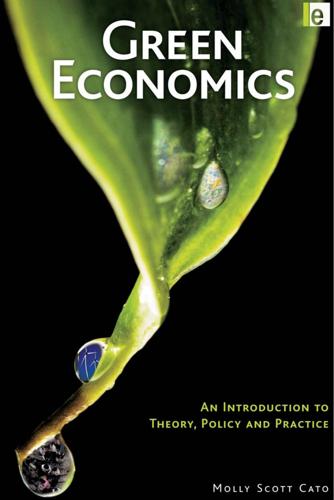Multi Fibre Arrangement
description: an international trade agreement on textiles and clothing that was in effect from 1974 to 2004
6 results

Overdressed: The Shockingly High Cost of Cheap Fashion
by
Elizabeth L. Cline
Published 13 Jun 2012
The number of restraints mushroomed over the decades, extending to forty countries by 1994, when restraints governed about half of U.S. clothing imports.13 A single worldwide quota system, the Multi Fibre Arrangement (MFA), was eventually established in 1974 to bring together all of the restrictions. The MFA limited the number of clothing exports from developing countries into industrialized ones, but only when the number of imports climbed high enough to pose a threat. The result was a convoluted system of quotas that limited the import numbers of more than one hundred categories of clothing, like cotton knit shirts or blue denim, on a country-by-country basis. The Multi Fibre Arrangement shaped the garment industry worldwide from 1974 until 2005, and its effects are still felt.
…
Metchek recalls, “Whole factories, machines and everything, moved to Mexico.” This cost the Los Angeles industry tens of thousands of jobs in the year following NAFTA and pushed down wages for workers in Los Angeles. The following year, the World Trade Organization ruled that the quotas established by the Multi Fibre Arrangement were an unfair trade advantage for developed countries. The MFA entered into a decade-long phasing out. Metchek bristles at the mere mention of the MFA’s expiration. “Don’t even get me started on that,” she exclaims. “I have been pounding the table on that one and have been for years. The Chinese were shipping in jeans, T-shirts, sweatshirts, junk by the tonnage.
…
I decided to travel to China because, despite what the labels on my clothing tell me, apparel manufacturing is not at all evenly distributed across the planet. Among my own cheap threads are “made in” labels from Bulgaria, Cambodia, Hong Kong, India, Indonesia, Israel, the Philippines, Romania, Sri Lanka, Thailand, Turkey, Vietnam, Lesotho, and Macau—countries from every continent on earth, except my own. But since the Multi Fibre Arrangement expired in 2005, China has become the colossus in the field. Chinese apparel imports to the United States have more than doubled since 2005 and now account for an astounding 41 percent of imported clothing.3 In certain categories, China totally dominates, making 90 percent of our house slippers, 78 percent of our footwear, 71 percent of our ties, 55 percent of our gloves, and roughly 50 percent of our dresses.4 In many product categories, China is not associated with quality.

The Next Factory of the World: How Chinese Investment Is Reshaping Africa
by
Irene Yuan Sun
Published 16 Oct 2017
The combination of externally imposed and self-inflicted problems prevented Nigeria from truly benefiting from trade access offered by the EU and the United States—access that Lesotho took ample advantage of. First, the Lomé Convention gave tariff-free access to the EU’s markets to its former colonies across Africa and the Caribbean. Second, the Multi Fibre Arrangement (MFA) came to govern global textile production, setting quotas for textiles and garments that developing countries could sell to the developed world. Although the arrangement technically applied to all developing countries, only Asian countries consistently hit their quotas. So Asian clothing factories relocated to locales that had ample quota room, including Lesotho.
…
See also capital-intensive production labor protection laws, 79–81, 83–84 labor supplies, 92–94, 99 Lawrence, Robert, 44, 57 Leakey, Richard, 175–177 leapfrogging, 22 Lebanon, 120 Lee Group, 42, 46–47, 63 Lesotho, 7, 11, 23–24, 49–66 clothing manufacturing, 49–50, 71–72, 114–115, 184n5 comparative advantages of, 73 exchange rates in, 56 failure rates in, 114–115 foreign investment in, 73 GDP, 62, 184n13 government loans in, 65 industrialization in, 8 infrastructure, 62–63, 67–69 local ownership of factories in, 113–119 textile manufacturing, 57–61 unions in, 102–105 US trade policy and, 66, 184n3 Lesotho National Development Corporation, 72–73 Levi’s, 56 Lin, Alan, 71–72, 136 Lin, Justin Yifu, 25–26, 93 living standards, 6, 29, 89–91, 94–95 Lomé Convention, 54, 63–64 macroeconomics, 32–33, 35–41, 44–45 management experience in, 65 local elites in, 115–116 local ownership and, 113–119 manufacturing African ownership of, 109–127 attractions of Africa for, 44–47 benefits of jobs in, 94–96 Chinese investment in African, 42–44 complaints about workers in, 91, 96–100 difficulty of learning to work in, 91, 100–101 dishonesty in, 74–81 diversity and resiliency in, 51–54 education and jobs in, 95 employment share from, 43–44 failure rates in new, 114 flying geese theory of, 9, 23–30, 93, 112–113 global competition in, 70 global output, 179n1 growth of Chinese, 29–30 human chain in the spread of, 17–30 individuals’ influence in, 32–33, 45–47 input management in, 113 learning by doing, 17–19, 23–26, 89–91 life, death, and rebirth of, 31–47 negative effects of, 7–8 Nigeria, 31–47 obsolete technology in, 37 owners in, 64–65, 109–127 product/location drivers of, 61–66 rebirth of African, 41–42 risks in, 67–85 societal transformations from, 91, 97–98, 101–107 uneven growth in, 51 wealth creation from, 7 markets, 7 in-country vs. exports, 52–57, 62–63 McKinsey & Company, 42, 92 migrants and migration, 123–127 Millennium Development Goals, 22, 153 Millennium Villages, 136 mindset, 136 Modern Times, 100–101 Mohapi, Chris, 114–115, 119 Mothabeng, Thabiso, 116–117 Mountain Textile Screening Company, 116–117 M-Pesa, 142–146, 190n14 Multi Fibre Arrangement (MFA), 63–64 Nairobi National Park, 175–177 Namibia, 3–4, 151–153 National Youth Service, Kenya, 133 Ndemo, Bitange, 144–145 Ndung’u, Njuguna, 145, 146 New Development Bank, 12, 174 Nien Hsing Textile Company Limited, 58–61, 184n7 Nigeria, 10, 31–47 cardboard box factory, 89–91 ceramics factory, 17–19, 21, 22–23, 74–75 corruption in, 39, 40–41, 63, 75–78 customs corruption in, 136–140 demographics of, 93–94 foreign investment in, 33–34, 73 Four Great Families in, 34–35 GDP, 36, 62 global competition and, 37–39, 40–41 good enough governance in, 136–140 industrialization in, 8 Lee Group in, 42, 46–47 market growth in, 7 oil in, 34 pharmaceutical industry, 157 protectionism in, 53 smuggling in, 40–41 special economic zones, 137–140, 141–142, 169 steel production in, 61–66, 75 Structural Adjustment Program in, 21, 37 textile manufacturing, 33–41, 61–66 unemployment rate, 94 Nigerian Investment Promotion Commission, 73 non-traded sectors, 94–95 Obama, Barack, 43, 154 Ogun Guangdong Free Trade Zone, 137–140, 141–142, 169 oil production, Nigeria, 34, 35–37, 39 Omidyar Network, 82 optimism in Africa, 6 Chinese commitment and, 167–169 good enough governance and, 131–132, 136, 142, 149–150 Hiding Hand and, 165–166 about local ownership, 118–119 Oqubay, Arkebe, 166 Organisation for Economic Co-operation and Development (OECD), 29 ownership, local, 109–127 African-Chinese collaboration for, 120–123 in Lesotho clothing factories, 113–119 natural progression toward, 119–120 optimism about, 118–119 relationships in, 123, 126–127 trust and, 123–124, 126 partnerships, 115–117 patent laws, 162 pharmaceutical industry development of in China and India, 161–163 Ethiopia, 121–123, 156–157, 163–169 international aid and, 154–158 pivoting, 146–148 plastic wrap, 28–29 poverty Africa, 6 China, 2–3, 180n10 President’s Emergency Plan for AIDS Relief (PEPFAR), 154, 159 productivity, 20, 71–72, 94, 96–101, 115 profit margins, 23, 56 property rights, 135 protectionism, 174 export-oriented manufacturing and, 63–64 Nigeria, 37–39, 40–41, 53 US, 72 Protestant work ethic, 135 Qi Lin, 132–134 racism, 92, 97–101 Reagan, Ronald, 20 realism, 136 Reebok, 50, 56 regulation, 70, 74–75 development of with industrialization, 83–84 innovation and, 143–148 working conditions and, 79–81 See also government relationships, 123, 126–127 rentier states, 38–39 research and development, 158 resiliency, 51–54 resource curse, 35–36, 38–39 risk, 65–66, 67–85 Chinese willing to accept, 70–71 good enough governance and, 131–132, 140–142 in labor- vs. capital-intensive production, 54 local ownership and managing, 113 partnerships and, 115–117 robotics, 9, 172–173 Rodrik, Dani, 20, 21 Royal Dutch Shell, 35–36, 137 rule of law, 135 Rushdie, Salman, 123–124, 126 Sabel, Charles, 134 Sachs, Jeffrey, 136 Safaricom, 144, 145 safety issues, 79–81 Saich, Tony, 147 Seiso, Mabereng, 115–116 Setipa, Joshua, 67–68 Shen, Mrs., 49–50, 54–57, 64, 172 Siemens, 137 Sigei, Stephen, 109–112, 126 Silk Road, 173–174 Singapore, 29 Sino-Africa Centre of Excellence (SACE) Foundation, 129–132 Sino-Africa Industrial Skill Upgrading Center, 149–150 Sino-Ethiop Associate Africa PLC, 121–123 Skyrun, 93 Smith, Adam, 165 smuggling, 40–41, 136–140 social media, 124–127 societal transformations, 91, 97–98, 101–107 sourcing raw materials, 75 South Africa, 62–63, 73, 103–104, 163 South Korea, 29, 39 special economic zones (SEZs), 137–140, 141–142, 169 standardization, 46–47 state-owned enterprises (SOEs), 43 structural justice/injustice, 159–163 Sun, Mr., 17–19, 21, 22–23, 73–74 supply chains, 55–57, 113 Taiwan, manufacturing in, 19, 26, 29, 184n6 Taiyuan clothing factory, 71–72 Tanzania, 41, 157 Teachers Service Commission (TSC), 131 technology automation and, 9, 55, 58–61, 172–173 downtime from malfunctioning, 114, 115 obsolete, 37 test and learn approach, 145–146 textile manufacturing, 61–66 Asian, 39 automation in, 58–61 clothing manufacturing vs., 52 Nigeria, 33–41 Thatcher, Margaret, 20 Thompson, E.

The Globalization Paradox: Democracy and the Future of the World Economy
by
Dani Rodrik
Published 23 Dec 2010
Manufacturing sectors that were liberalized but began to face significant competitive threat from lower-cost/higher-productivity exporters soon received protection rather than meet their fate. So the textile and clothing industries of the developed countries were sheltered from 1974 on by the Multi-Fibre Arrangement (MFA), a set of bilaterally negotiated quotas on exports from developing nations. The 1980s witnessed the spread of voluntary export restrictions (VERs), arrangements whereby (typically) Japanese exporters of autos, steel, and some other industrial products undertook to keep their exports within specific quotas.
…
In services, countries were required to specify areas they were willing to open up, and the extent of liberalization varied across countries and sectors such as banking and telecoms. In agriculture, import quotas were to be phased out and converted into tariffs and subsidies. The push for removal of agricultural quotas, tariffs, and subsides would henceforth gain center stage. The quota regime of the Multi-Fibre Arrangement, which governed trade in textiles and clothing, would also be phased out within a decade. While the initial liberalization in all these areas remained limited, an important threshold had been crossed. In addition, there were new rules on patents and copyrights, requiring developing countries to bring their laws into conformity with those in the rich countries.

An Extraordinary Time: The End of the Postwar Boom and the Return of the Ordinary Economy
by
Marc Levinson
Published 31 Jul 2016
But the lack of automation—blouses and trousers were sewn one stitch at a time by poorly educated workers bent over sewing machines, paid by the piece—meant that workers in poor countries could turn out clothing far more cheaply than better paid workers in rich countries. Rather than allowing their citizens to enjoy the benefits of inexpensive clothing, first-world governments, led by the United States, signed an international pact in 1973 permitting the use of tariffs and import quotas to control the garment trade. The Multi Fibre Arrangement, as it was called, soon led to detailed agreements specifying how many brassieres and wool sweaters one country could export to another. At consumers’ expense, the arrangement sustained the rich countries’ low-productivity apparel industries for three decades, preserving the social peace but delaying the shift of capital and labor into industries where they might have contributed far more to economic growth.
…
See Ministry of International Trade and Industry Mitterrand, François, 197, 199–201; economic policy of, 203–211, 213–217; labor/trade unions and, 213; nationalism and, 206–208, 209, 210, 214; new version of socialism and, 210, 213–217; Socialist Party under, 199–200, 201, 203, 204–205, 206, 208–209, 210, 215, 217; welfare state and, 213 modernization, 117, 202, 210 Mondale, Walter, 234 monetarist theory/monetarism, 27, 176, 181, 182, 183–185, 186, 195, 220–221, 225 monetary inflation, 75–76 monetary policy, 183–184; Federal Reserve, 49–56, 180–182, 220; inflation and, 51–56; jobs and wages and, 182 Monti, Mario, 184 Mozambique, 44 Multi Fibre Arrangement, 131 multifactor productivity, 258. See also productivity Mundell, Robert, 227 NAFTA. See North American Free Trade Agreement Nakasone, Yasuhiro, 178 National Bureau of Economic Research, 48, 134 National Energy Act, 109 national income: ratio of government debt to, 151 National Westminster Bank, 82, 84 nationalism, 267; in France, 206–208, 209, 210, 214; in Spain, 211 natural gas: deregulation of, 102, 103, 104, 108–109, 110, 113 Nazi Germany, 146, 190 Nazi Party, 27–28, 29 Nehru, Jawaharlal, 41 Netherlands, 1, 23, 30, 224; labor share in, 141; labor/trade unions in, 169; ungovernability in, 156; welfare state in, 18 new economics, 26, 261 new industries: vs. raw materials, 45–46 New International Economic Order, 43 The New York Times, 54, 231 Newsweek, 70 Nixon, Richard, 2, 3, 70–71, 119–120, 157; anti-inflation policy of, 106; Cost of Living Council and, 107; economic forecasts and, 65, 66; economic policy of, 47–49; employment and, 50; energy czar appointment by, 100, 108 (see also Simon, William); energy sector and, 102; environmentalism and, 61; inflation and, 48, 50; interest rates, unemployment, and inflation and, 55–56; monetary policy and, 51; oil crisis of 1973 in, 99–100; population growth and, 61; re-election of, 56, 180; regulation and, 108; Smithsonian agreement and, 55; Speer analogy and, 102, 108; treasury secretary appointment by, 101, 110 (see also Simon, William); unemployment and, 48, 235; Vietnam and, 48; wage and price controls and inflation and, 53–54; Watergate scandal and, 156; Watergate scandal and resignation of, 101, 110 Nixon administration, 222 Nixon Shock, 53 Nordhaus, William, 59 North America, 140; bank loans to Third World and, 241; debt crisis in, 247; economic slowdown in, 3–4; economy at close of World War II in, 17; income per person in, 6; postwar productivity in, 24; productivity bust in, 268; productivity slowdown in, 265; ungovernability in, 156–160 North American Free Trade Agreement (NAFTA), 142 Northern Europe, 81, 212 Northern Ireland, 4, 167 Norway, 1–2; anti-tax movement in, 153, 154; income distribution in, 136–137 nuts and bolts industry, 125–126 Obama, Barack, 9 oil: deregulation of, 99, 101, 102, 103, 104–106, 107–108, 109, 110, 113 oil crisis of 1973, 1–3, 68–79, 81–97, 155; Arab-Israeli conflict and, 69, 70–71; Aramco and, 69–70, 71; in Canada, 2, 71, 240; economic stagnation and stagflation and, 78; economy based on cheap oil and, 79; in Europe, 1–2, 3; Federal Reserve and, 72, 74, 77, 78, 94, 96; in France, 72–73, 77, 78; in Great Britain, 72, 74–75, 77, 167; impact on global financial system (banks and brokerage houses) and, 81–97; inflation and, 74–77, 78; in Italy, 72; in Japan, 2–3, 72, 74, 77–78, 115–119, 122–124, 240; oil price increases and production cuts and, 72, 73–74, 95; productivity bust and, 78–79; Saudi Arabia and, 1, 67, 68–71, 73, 95; Seven Sisters (US and European oil companies) and, 68–69; in Soviet Union, 162; in Sweden, 166; Third World development and, 239–240; UN Security Council Resolution 242 and, 71; in United States, 1, 2, 3, 67, 68–79, 99–100, 240; welfare state and, 148; in West Germany, 72, 74, 177; Yom Kippur War and, 73.

Green Economics: An Introduction to Theory, Policy and Practice
by
Molly Scott Cato
Published 16 Dec 2008
Similarly quotas, which play a crucial role in ensuring security of access for exports from poor countries into rich ones, would be permitted as a way of supporting producers in poorer countries. In the market for textiles, for example, there is fierce competition between poorer countries, which produce more than half the world’s textile exports and nearly three-quarters of its clothing exports.17 Producer countries enjoyed some protection through the 136 GREEN ECONOMICS Multi-Fibre Arrangement (originally negotiated by developed countries to protect their post-war markets against imports) until this was removed under WTO pressure at the end of 2004. This has led to the collapse of an important sector of production in countries whose workers were paid slightly more – the so-called ‘race to the bottom’ in production.18 From a development economics perspective and in a book with a strong focus on poverty alleviation, Tom Lines argues the case for a fundamental restructuring of commodities markets.

The Hidden Globe: How Wealth Hacks the World
by
Atossa Araxia Abrahamian
Published 7 Oct 2024
It’s hard to untangle these explanations, and none of the economists chose to focus on the downsides of the zone projects, namely shoddy labor conditions and low pay. What’s more, there were other factors at play. Mauritius was uniquely small, diverse, and well organized, and its zone program was run by the local government, which invested in infrastructure. It happened to benefit from two major trade treaties in the late 1970s, the Multi-Fibre Arrangement and the Lomé Convention, both of which drew in foreign investors. And because it was logistically difficult in the 1960s for Mauritian capitalists to move their money offshore, they could be persuaded to invest it closer to home, which kept wealth local. (One man tried, Dommen told me, but the Swiss bank he’d hoped would shelter him refused to convert such a large quantity of Mauritian currency.)